In Genoa after three years, Palazzo Rosso, the large museum belonging to the Strada Nuova Museums complex along with Palazzo Bianco and Palazzo Tursi, which is housed in the 17th-century residence of the Brignole-Sale family, reopens in Genoa: after major upgrades, the collections preserved in Palazzo Rosso will finally reopen to the public on June 7, 2022.
Major plant and structural upgrades were needed for Palazzo Rosso, which closes the majestic string of palaces facing Via Garibaldi, a UNESCO World Heritage Site since 2006, and these have now been completed: the rooms of one of the city’s most important and visited museums will be equipped with facilities up to the new technological needs of the exhibitions. The works, which brought the facility up to current quality and safety standards, began at the end of 2019 and were financed thanks to the “Pact for Genoa.” The city administration covered the interventions for the refurbishment of part of the windows and doors, the restoration of monumental furniture and the creation of some curtains, while the Compagnia di San Paolo Foundation supported, under the 2019-20 Framework Protocol between the Compagnia and the City of Genoa, the restoration of the facade of Palazzo Rosso, the Autumn Hall, the Loggia of Ruins and included in the intervention also the gardens, with the aim of a complete reopening of the architectural emergency, making its visit more attractive, interesting and rich.
Since 2000, the City of Genoa and the Compagnia di San Paolo Foundation have undertaken an ambitious project to redevelop and enhance what has become one of the most important museum districts in Liguria, the ancient and spectacular Strada Nuova, today’s Via Garibaldi, in full coherence with the Foundation’sCulture Objective, which is committed to preserving and conserving the architectural and artistic heritage, in the conviction that it represents a fundamental resource of the territory and deserves not only great attention, but also medium- and long-term investment policies.
The work presented today and related to Palazzo Rosso involved the technological modernization and upgrading of facilities (plumbing, mechanical, electrical and special), with adjustments necessary for the use of computer networks, which in modern museums make it possible to offer completely different visitor experiences than in the past. For the new design of the facilities, special attention was paid to finding, in agreement with the Superintendence, solutions that would not damage the wall decorations on the second piano nobile (the only one with frescoes) and the marble floors. The aim of the project was to restore the facilities with absolute respect for the historical characteristics of the complex and the interventions carried out in the 1950s by architect Franco Albini. Fabric fittings were also philologically replaced. Alongside the plant and technological interventions, two very important conservation operations were carried out: the Sala della Grotta on the second mezzanine floor with its “alcove,” an extraordinary private room that is unique among the interiors of Genoese palaces and is being opened to the public for the first time, was restored. Also restored is the vault of the Sala della Primavera frescoed by Gregorio De Ferrari, an authentic masterpiece of the great Genoese Baroque decoration.
However, the delicate dismantling operations to make way for construction sites were not “integral.” During the closing period, in fact, a part of the “Rosso” collections was in any case visible to Genoese and tourists: in the rooms overlooking the garden of Palazzo Bianco, the great masterpieces of Palazzo Rosso’s collection were on display throughout the period of the works: from Palma il Vecchio’s panel with the Sacred Conversation, to Ludovico Carracci’s oil on copper, to the famous canvases by Giovan Francesco Barbieri known as Guercino (the Cleopatra and God the Father with an angel) and Guido Reni (the Saint Sebastian). And then a precious copper by Orazio Gentileschi, the canvas with Clorinda frees Olindo and Sofronia from the stake by Mattia Preti, the Portrait of Geronima Brignole-Sale with her daughter Aurelia by Anton Van Dyck, and others.
The works now return to their location along the exhibition route on the two main floors of Palazzo Rosso, except for those on loan to the Scuderie del Quirinale where they represent the city, along with many other Genoese masterpieces, at the major exhibition Superbarocco. Art in Genoa from Rubens to Magnasco.
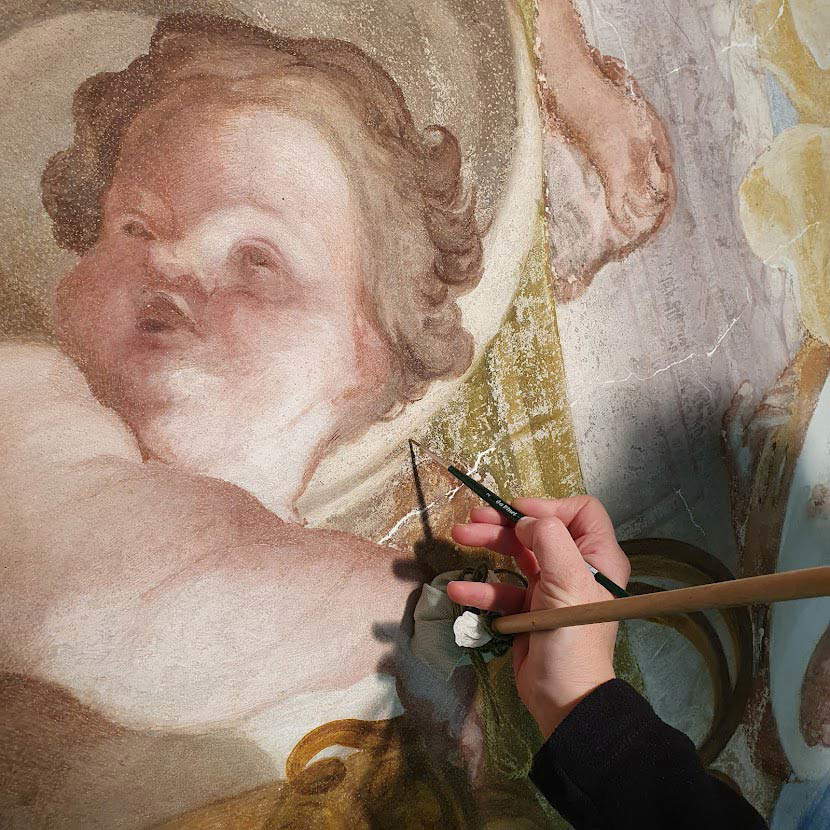
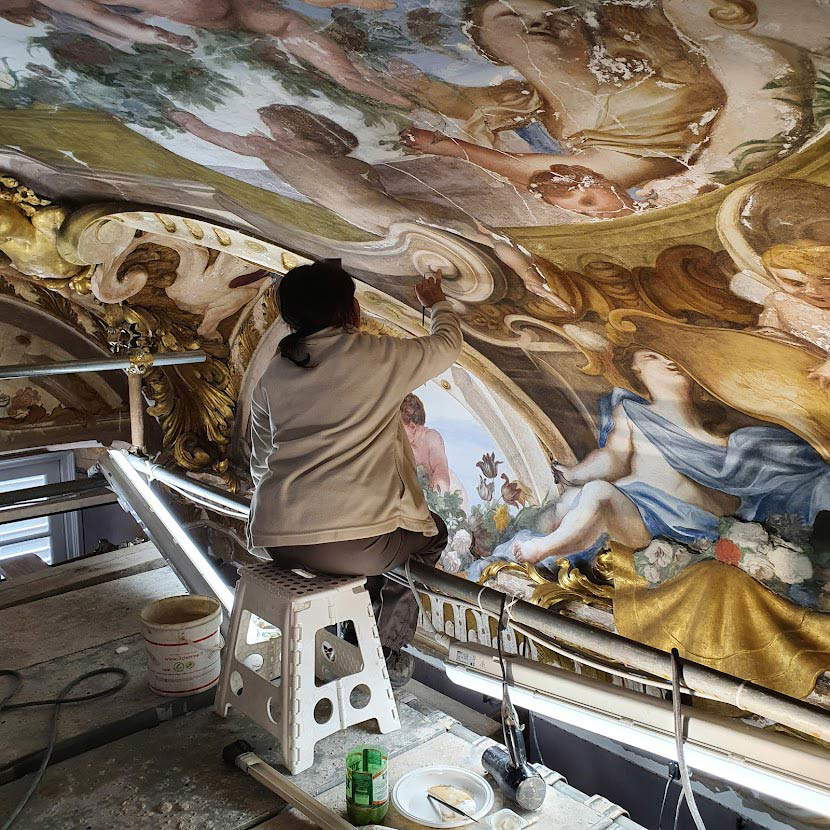 The
The The restoration of
The restoration of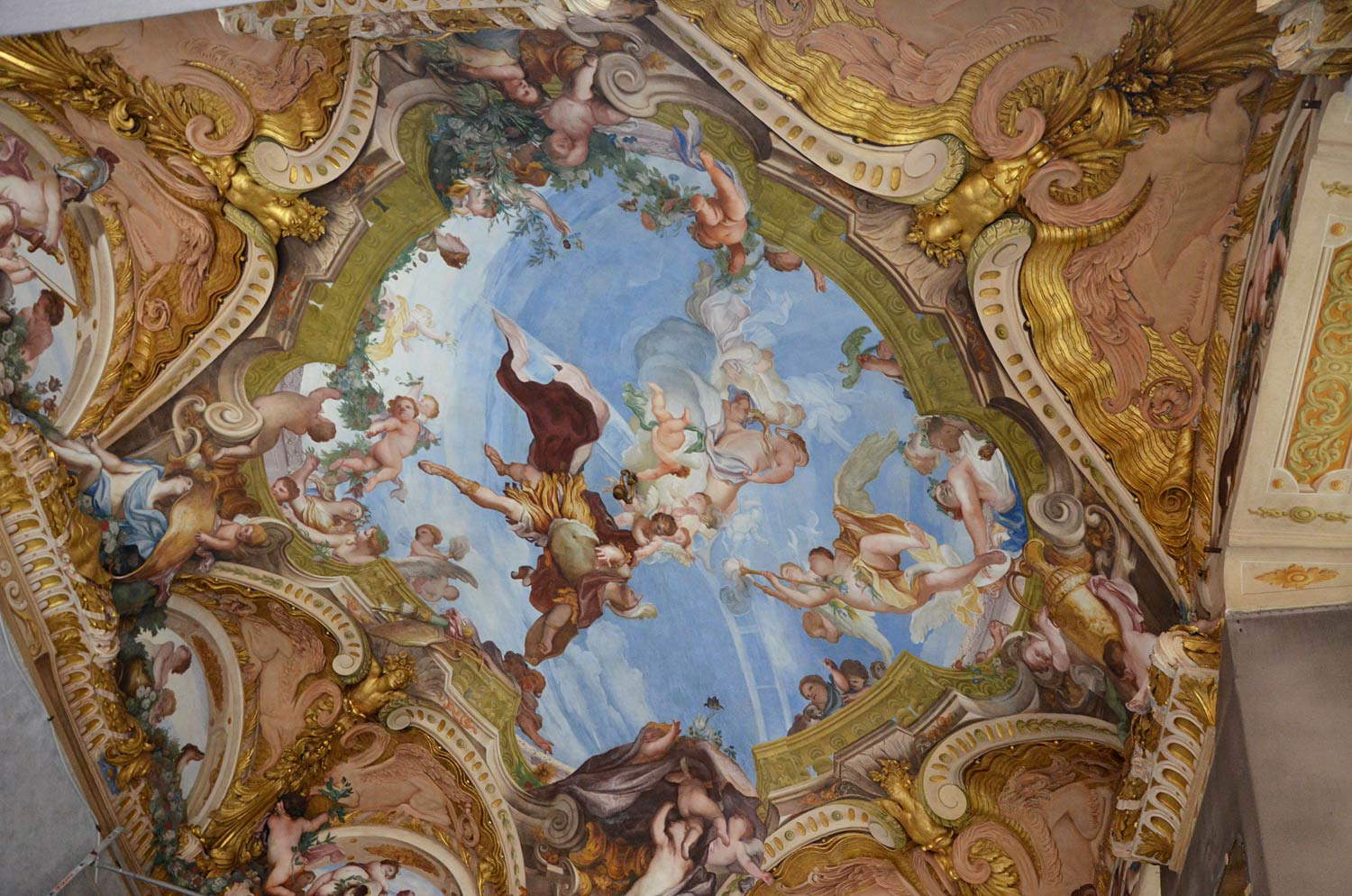
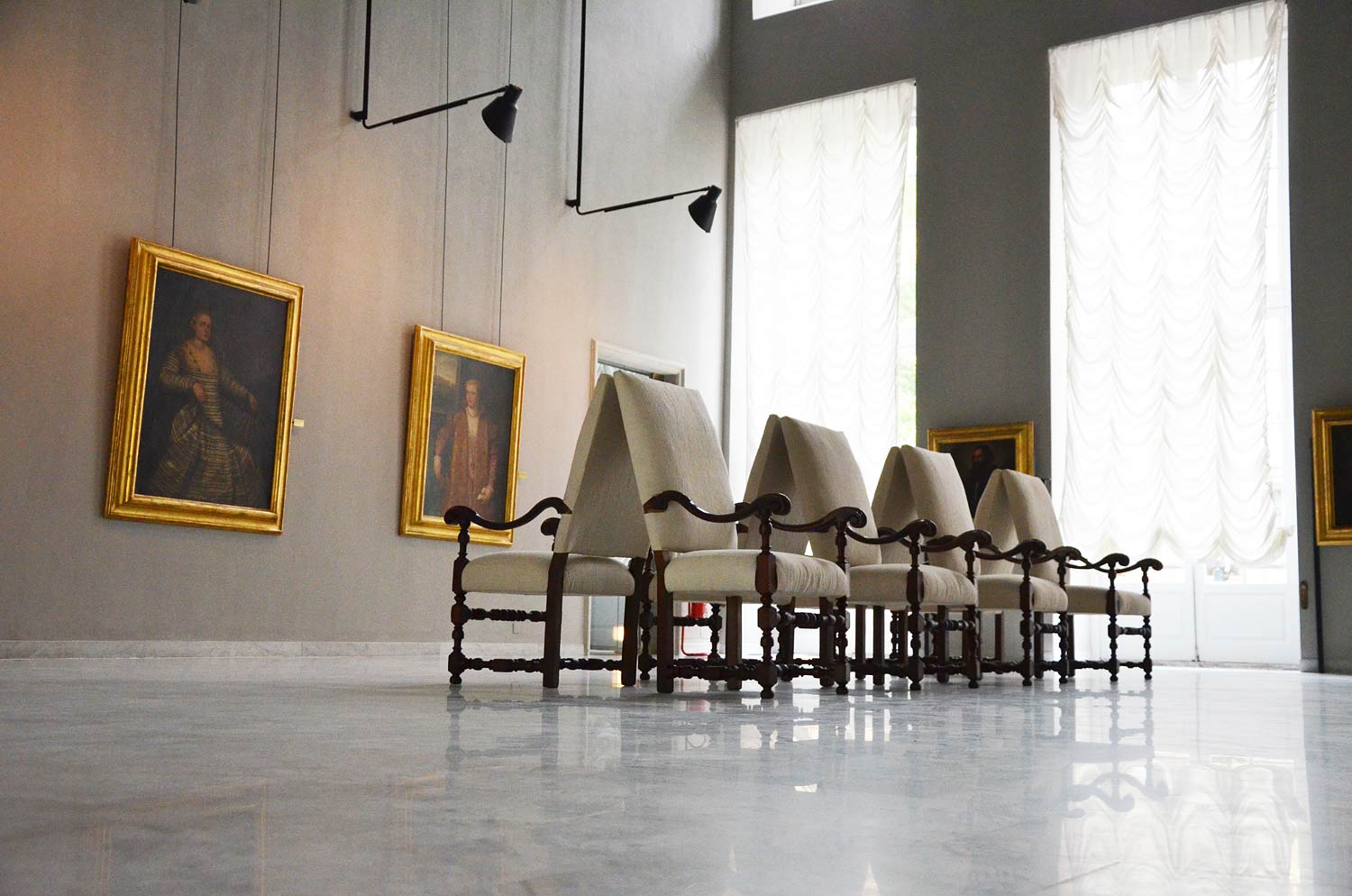
With the restoration and reopening of Palazzo Rosso to the public, visitors will be able to visit the “mezzarie” of the sumptuous residence of the Brignole Sale family for the first time. Starting in 1705, Anton Giulio II Brignole Sale in fact had a small apartment decorated in a mezzanine located between the first and second piano nobile of Palazzo Rosso, just below the rooms known as “delle Stagioni” decorated by Domenico Piola and Gregorio De Ferrari on commission from Anton Giulio’s father, Giovan Francesco I. This is a rather unusual space, a sequence of rooms much smaller in proportion than the sumptuous halls on the two noble floors, and evidently intended for private use: a first room perhaps intended to house a collection of paintings; a dining room known as “della Grotta” because of its decoration, from which there is access to a bedroom with an alcove flanked by a bathroom and a wardrobe room; and, in the opposite direction from the first room, a drawing room decorated with mirrors.
The apartment represents a unicum among the interiors of the Palazzi dei Rolli, and offers an extraordinary vantage point on the daily living spaces of the aristocrats who inhabited the palace: a place of luxury, refinement and savoir vivre that the public can finally admire. Anton Julius II had just returned from an ambassadorship to Paris (where he had had his portrait painted by Hyacinthe Rigaud), and he turned to French artisans for at least part of the decoration, in an oriental flavor, of the first room; while the frescoes are by Gregorio De Ferrari.
Documents indicate that the two sculptural groups dedicated to the stories of Jupiter in the form of a swan with Helen and Pollux and The She-wolf with Romulus and Remus by Bernardo Schiaffino and Francesco Biggi respectively, normally displayed on the second piano nobile and currently on loan to the Superbaroque exhibition at the Scuderie del Quirinale, were intended for these rooms, probably the Sala della Grotta. The frescoes and wood paintings in the Grotto Room, dedicated to the stories of Helen, are the work of Domenico Parodi.
The bedroom still has Domenico Parodi at work on the frescoes, while the extraordinary alcove was probably designed by Gregorio De Ferrari, with the spectacular decoration faking in stucco a large flowered drape, the covering of mirrors on the walls and a parquet floor in an exceptional state of preservation. The sudden death of Anton Julius II in 1710 interrupted the work, which was resumed by his son Giovan Francesco II around 1745; Giovan Francesco involved the painter Giacomo Boni in the creation of the drawing room covered with mirrors and furnished with small Regency-style consoles.
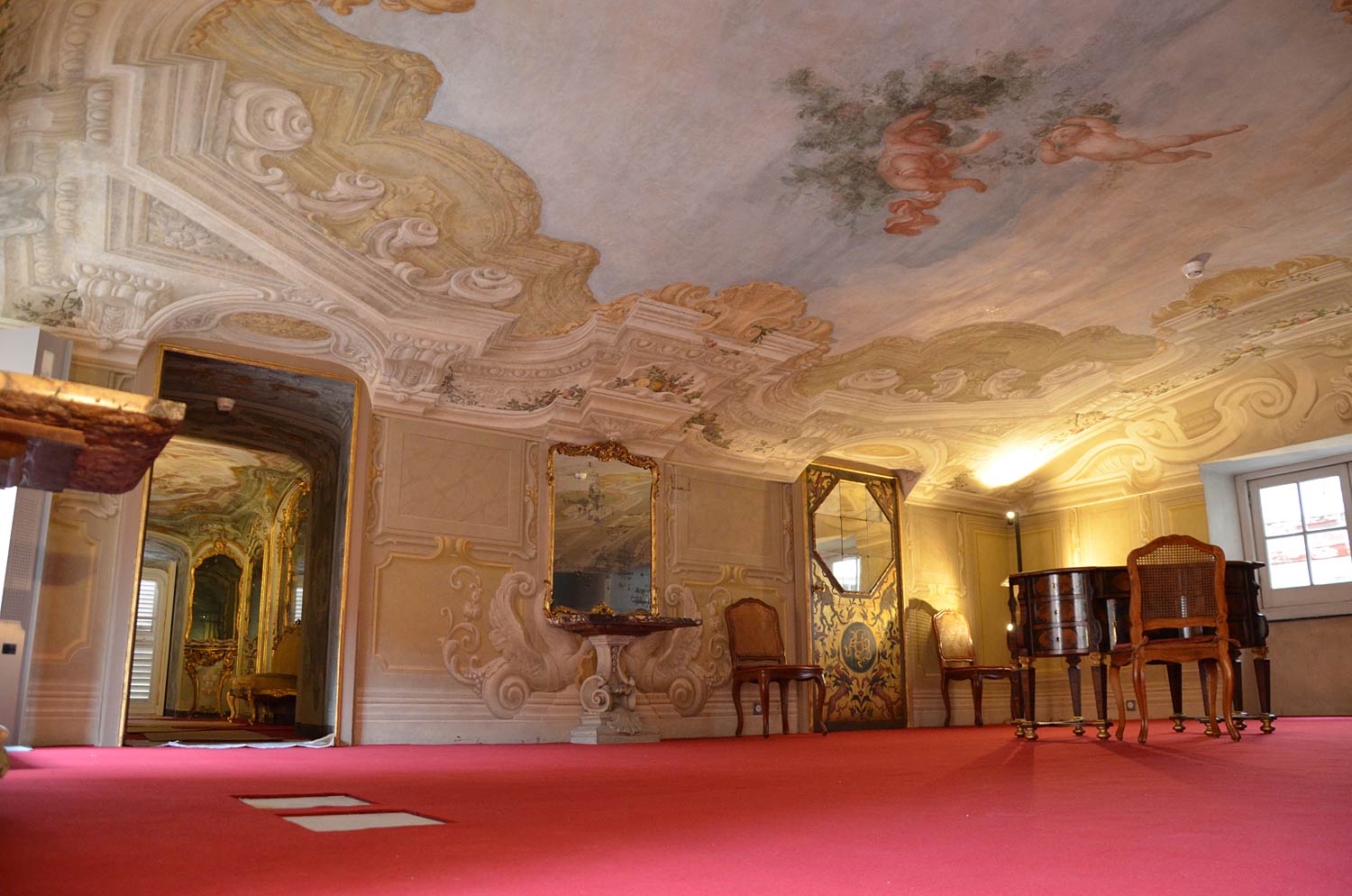 The Grotto
The Grotto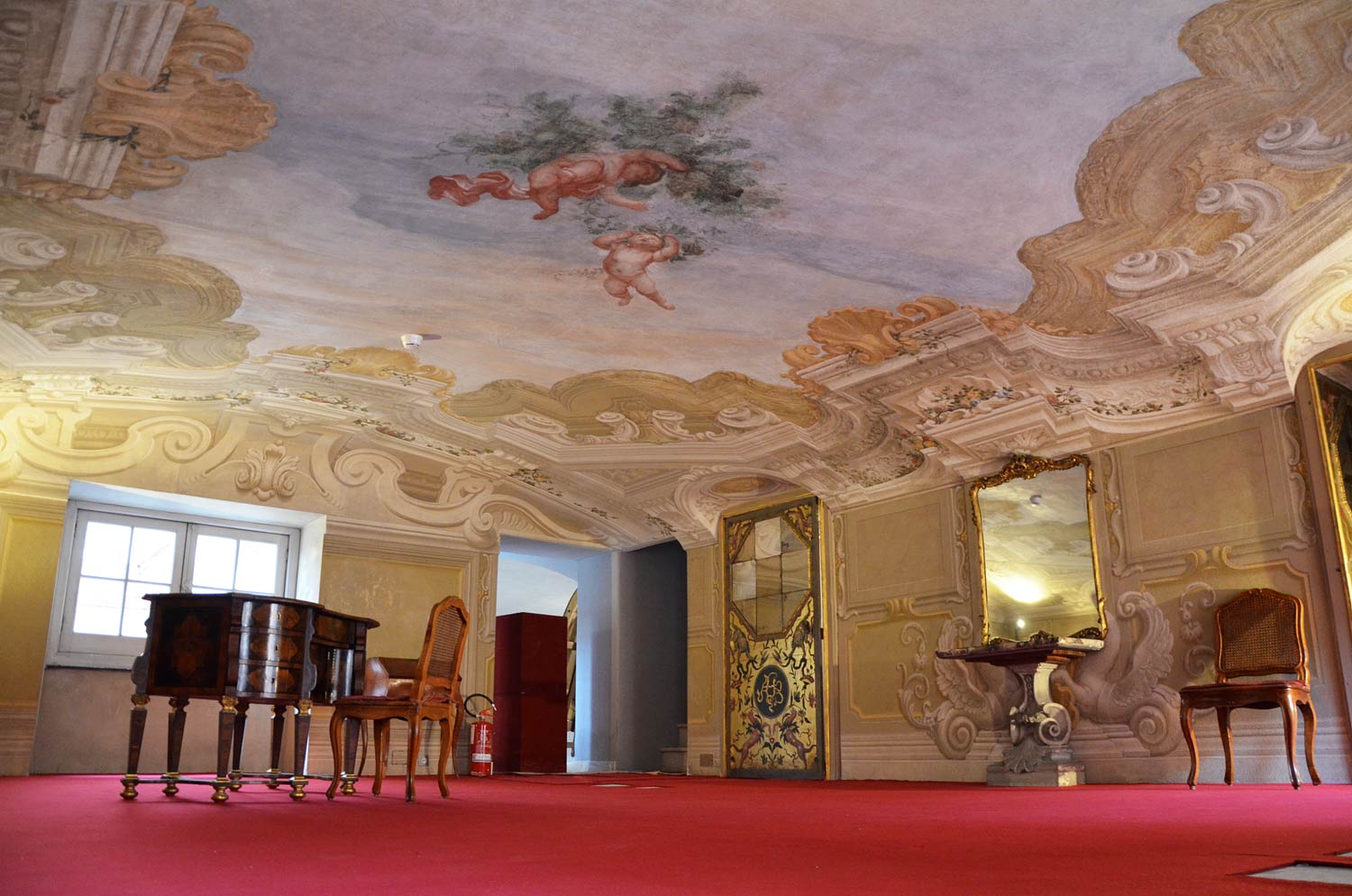 The
The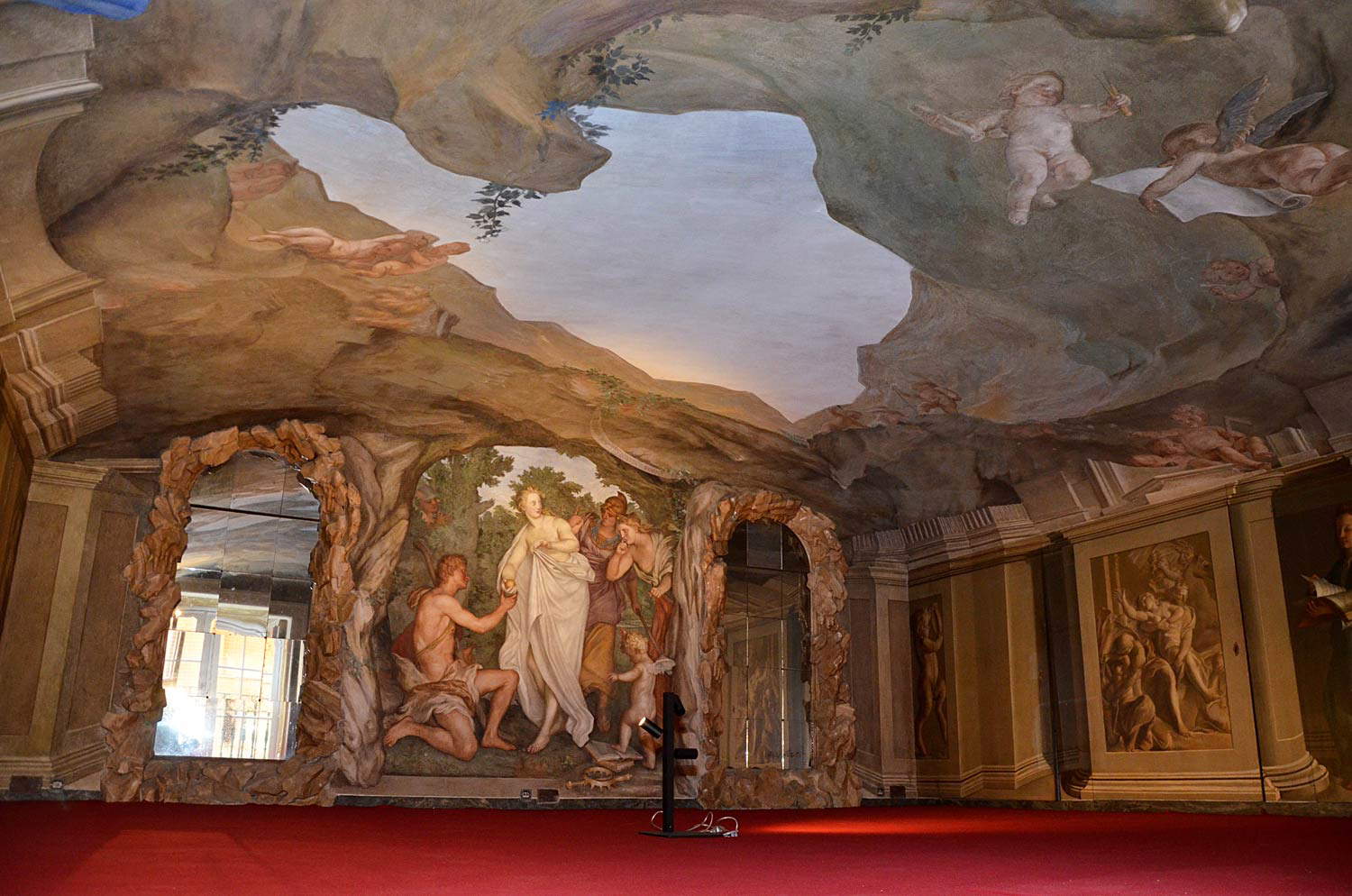 The
The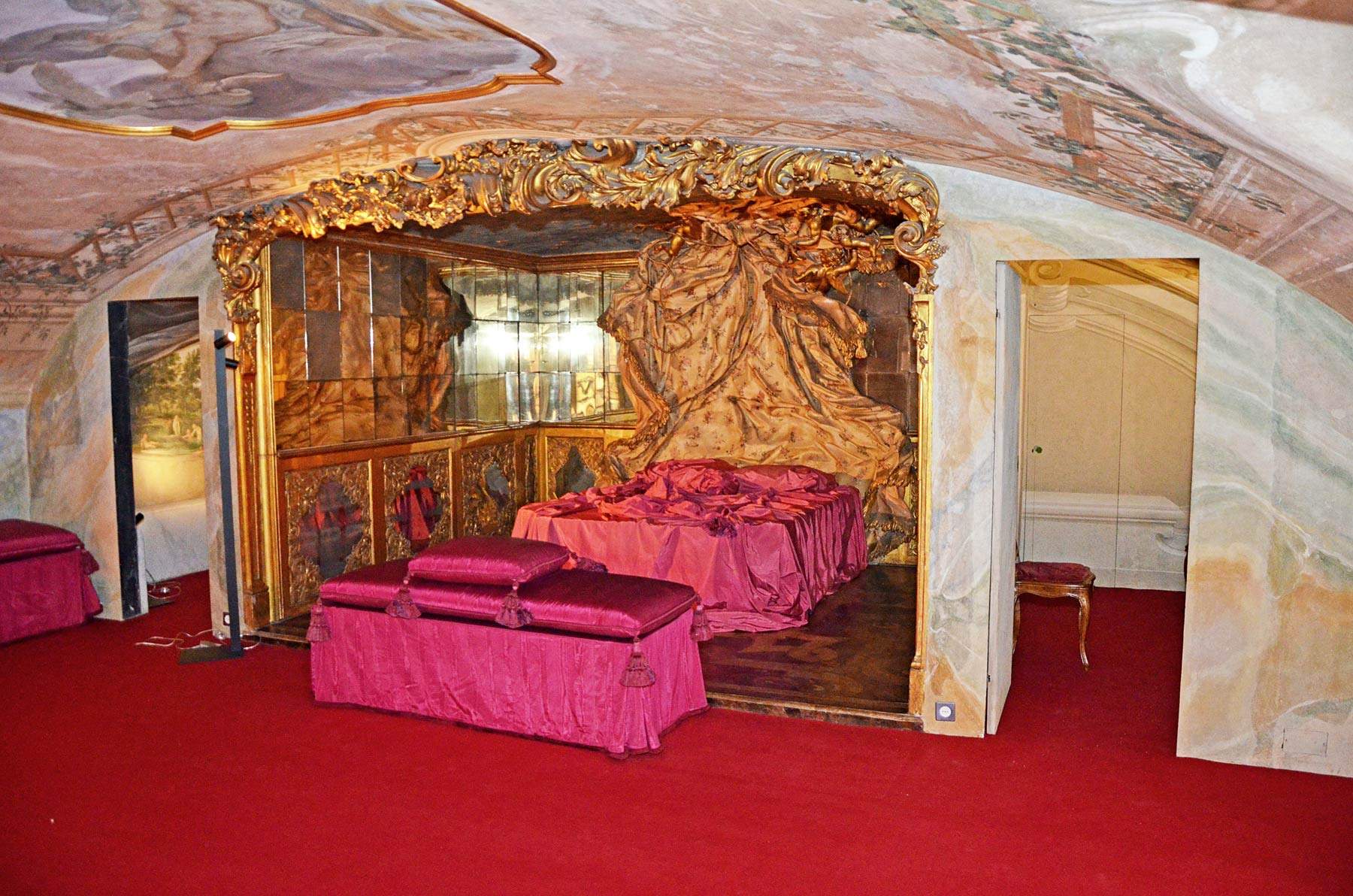

 |
| Genoa, after three years of work, Palazzo Rosso reopens. With big news |
Warning: the translation into English of the original Italian article was created using automatic tools. We undertake to review all articles, but we do not guarantee the total absence of inaccuracies in the translation due to the program. You can find the original by clicking on the ITA button. If you find any mistake,please contact us.